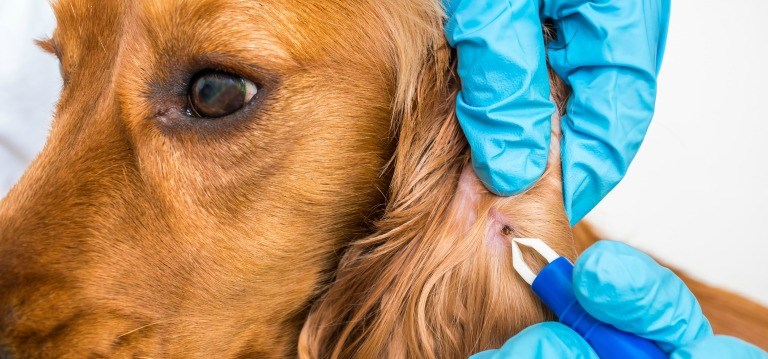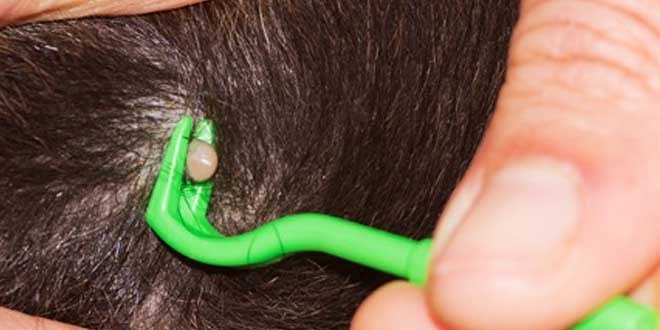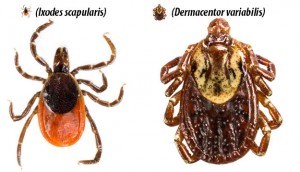My Pet Got Bit by a Tick - Now What?
Let's say you are out for a nice long hike with your dog, or your cat goes outside to explore the neighbourhood, and they come back with a tick on them - now what?
The first step is to do a tick check. Sometimes it is hard to see a tick on your pet. Ticks can be as small as a sesame seed. Only when fully engorged they can get as big as a blueberry! It is a good idea to do a tick check of your pet, yourself, and your family members, anytime you are outdoors in tall grasses or in the woods. When feeding on an animal, ticks like to live on the limbs (especially between toes and in the armpits), on the head (including behind the ears), and on the underside of the abdomen. Giving your pet a full body massage is the best way to find these parasites! Feel around the fur and move thick or fluffy fur carefully out of the way to see the skin.

To remove the tick you will need a set of tick removers or a pair of tweezers. You should also have an antiseptic cleaner on hand to clean the wound created by the tick. It is helpful to submit the tick for identification and tracking to aid in public health studies (see below) so remember to place the tick in an enclosed container like a sealed plastic bag or pill vial. If you have a tick remover, it works in a manner similar to the back of a hammer. Position the arms of the tick remover underneath the shoulders of the tick and carefully peel it off your pet's skin. If you would like a tick remover, just let us know! We can give you one for free! If you have a pair of tweezers, carefully grasp the tick's head and neck with the tweezers, being cautious not to pinch your pet's skin and not to squish the body of the tick. Once you have a good grasp, pull directly upwards to remove the tick. After removing the tick, clean your pet's skin with an antiseptic solution like alcohol or hydrogen peroxide to reduce the risk of infection.

As previously mentioned, submitting the tick for identification and/or tracking is helpful in determining the spread of ticks throughout Canada.
If you find a tick on yourself or a family member, you can go to
https://www.etick.ca/ to submit information on the tick.
Information including the location in which the tick was found, the species the tick was feeding on, the life stage of the tick, and the type of tick is greatly beneficial in helping researchers studying this rapidly growing parasite in Canada!

If your dog was bitten by a tick, it is recommended to have a 4Dx test done approximately 6 weeks after the bite. The 4Dx test is a blood test to determine if your dog has acquired any of the major tick-borne diseases - Lyme disease, Anaplasmosis, or Ehrlichiosis.
If your dog or cat is not already on tick prevention medication, please give us a call to discuss tick prevention options for them! There are a variety of oral chewables and topical medications to protect both dogs and cats against tick bites and tick-borne disease transmission!